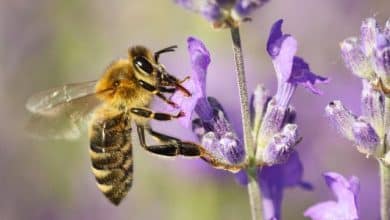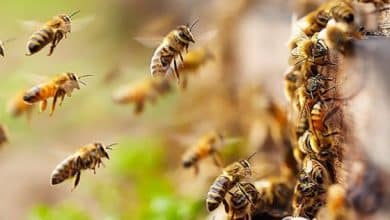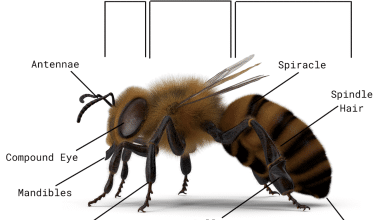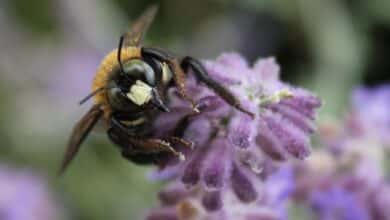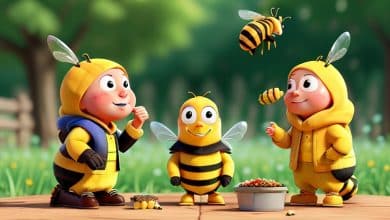pollen and nectar rich plants

Pollen and nectar rich plants play a vital role in supporting the health and survival of pollinators such as bees, butterflies, and hummingbirds. These plants provide the essential resources that these pollinators need to thrive and fulfill their crucial role in our ecosystems.
One of the main benefits of pollen and nectar for pollinators is the energy they provide. Nectar, which is essentially sugar water, serves as a source of carbohydrates that fuel the flight and foraging activities of pollinators. This energy is particularly important for long-distance migration and mating. Additionally, nectar is also rich in vitamins and minerals, contributing to overall pollinator health.
Pollen, on the other hand, is a valuable source of protein for many pollinators. Bees, for instance, gather pollen to feed their young, providing them with the necessary nutrients for growth and development. By consuming pollen, pollinators contribute to the pollination process as they inadvertently transfer pollen grains from one flower to another.
The presence of pollen and nectar rich plants in an ecosystem has a profound impact on biodiversity. These plants attract a diverse range of pollinators, which in turn leads to increased plant reproduction through efficient pollination. This results in more abundant and diverse plant communities, ultimately supporting other wildlife species that depend on these plants for food and habitat.
Creating and maintaining gardens and landscapes with a variety of pollen and nectar rich plants is essential for supporting pollinator populations and promoting a healthy ecosystem. By providing a constant and reliable food source, we can ensure the survival of these important creatures and contribute to the overall well-being of our environment. So, let’s plant and nurture pollen and nectar rich plants to safeguard the future of our pollinators and the planet.
Benefits of Pollen and Nectar for Pollinators
Pollinators, such as bees, butterflies, and hummingbirds, rely on pollen and nectar as crucial sources of sustenance. The benefits of pollen and nectar are essential for their overall health and survival.
Pollen serves as a valuable source of protein for many pollinators. Bees, for example, collect pollen to feed their growing larvae. By consuming pollen, they contribute to the pollination process, inadvertently transferring pollen grains from one flower to another. This efficient pollination is vital for the reproduction and survival of numerous plant species. Additionally, the protein from pollen supports the growth and development of young pollinators, ensuring the next generation thrives.
On the other hand, nectar serves as a rich energy source for pollinators. It is essentially sugar water, providing carbohydrates that fuel their flight and foraging activities. Nectar’s high sugar content provides the much-needed energy for long-distance migration and mating. It is also rich in vitamins and minerals, contributing to the overall well-being of pollinators.
Furthermore, the presence of Pollen and nectar rich plants in an ecosystem has a profound impact on biodiversity. These plants attract a diverse range of pollinators, creating a web of interconnected wildlife. The efficient pollination resulting from the presence of these plants leads to more abundant and diverse plant communities. This, in turn, supports other wildlife species that depend on these plants for food and habitat.
By planting and nurturing Pollen and nectar rich plants, we can support and safeguard pollinator populations, contributing to a healthy and thriving ecosystem. The constant availability of these essential resources ensures the survival of these important creatures and promotes overall environmental well-being.
Impact of Pollen and Nectar Rich Plants on Ecosystem
pollen and nectar rich plants play a crucial role in maintaining the balance and health of ecosystems. The presence of these plants has a significant impact on various aspects of the ecosystem, including biodiversity, food webs, and overall environmental stability.
First and foremost, Pollen and nectar rich plants attract a diverse range of pollinators, including bees, butterflies, hummingbirds, and other insects. These pollinators rely on the abundant food sources provided by these plants for their survival. As they visit these plants to collect nectar and pollen, they unknowingly transfer pollen grains from one flower to another, facilitating the pollination process. This efficient pollination directly contributes to the reproduction and survival of numerous plant species, leading to the development of more abundant and diverse plant communities.
Moreover, the presence of Pollen and nectar rich plants supports the growth and survival of other wildlife species. Many birds and small mammals rely on the fruits, seeds, and insects associated with these plants as a source of food. This creates a complex network of interconnected wildlife, forming the basis of a healthy food web within the ecosystem.
Furthermore, Pollen and nectar rich plants also contribute to the overall environmental stability. Through their extensive root systems, these plants help to prevent soil erosion, improve soil fertility, and promote water infiltration. They also contribute to air quality by absorbing various pollutants and releasing oxygen through the process of photosynthesis. This, in turn, creates a healthier and more sustainable environment for all living organisms.
By providing essential resources for pollinators and supporting other wildlife species, Pollen and nectar rich plants play a vital role in maintaining the balance and functioning of ecosystems. Through their impact, they contribute to the overall health, resilience, and sustainability of our natural environments.
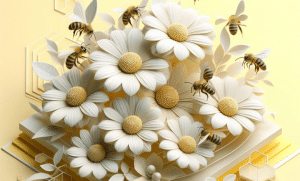
Flowers that Attract Pollinators
Flowers play a crucial role in attracting pollinators with their vibrant colors and sweet nectar. By planting a variety of nectar-rich flowers in your garden, you can create a haven for bees, butterflies, hummingbirds, and other pollinators. These flowers not only provide a valuable food source for pollinators but also enhance the beauty of your outdoor space.
When choosing flowers that attract pollinators, there are a few key characteristics to keep in mind. Look for flowers with open, tubular, or composite blooms, as these are easier for pollinators to access and collect nectar from. Flowers with bright colors, especially blue, purple, and yellow, tend to be particularly attractive to bees and butterflies.
Some popular flowers that attract pollinators include lavender, coneflowers, sunflowers, zinnias, bee balm, black-eyed susans, and salvias. These flowers are not only visually appealing but also produce an abundant supply of nectar. Planting a mix of annuals, perennials, and native flowers will ensure a continuous source of nectar throughout the growing season.
By providing a diverse array of nectar-rich flowers, you can create a buffet for pollinators, attracting a wide range of species to your garden. This, in turn, promotes a healthy ecosystem and helps to ensure the pollination of various plants in your area.
Remember to avoid the use of pesticides, as these can be harmful to pollinators. Instead, opt for organic gardening methods and embrace the natural balance of your garden. With a well-planned selection of flowers that attract pollinators, you can enjoy a thriving garden and contribute to the conservation of these important creatures.
Characteristics of Pollen and Nectar Rich Plants
pollen and nectar rich plants possess certain unique characteristics that make them highly attractive to pollinators. These characteristics are essential in order to provide an abundant and accessible source of food for bees, butterflies, and other pollinating insects.
One important characteristic is the structure of the flowers themselves. Pollen and nectar rich plants often have open, tubular, or composite blooms that are easier for pollinators to access. These types of flowers provide a landing platform for insects and allow them to easily collect nectar and pollen. The shape and size of the flower also play a role in attracting specific pollinators. For example, tubular flowers are particularly attractive to hummingbirds, while flat, open flowers are preferred by bees and butterflies.
Another key characteristic is the color of the flowers. Bright and vibrant colors tend to be more appealing to pollinators, especially shades of blue, purple, and yellow. Bees, in particular, are attracted to blue and purple flowers, while butterflies are often drawn to flowers that are yellow or orange. These colors may act as visual cues that help pollinators locate flowers from a distance.
Furthermore, Pollen and nectar rich plants typically produce a generous amount of nectar. Nectar is a sugary liquid that serves as a valuable energy source for pollinators. Plants with high nectar production are more likely to attract and sustain a diverse range of pollinators. Additionally, these plants often have a high pollen production, ensuring that there is enough pollen available for bees to gather and bring back to their hives.
By possessing these characteristics, Pollen and nectar rich plants play an important role in attracting and supporting pollinators in the ecosystem. Incorporating a variety of these plants into your garden can create a vibrant and enticing environment for bees, butterflies, and other pollinators.
Popular Flowers for Pollinators
There are many popular flowers that are known for their ability to attract and support pollinators. These flowers not only provide a beautiful display in your garden, but they also play a vital role in sustaining and nourishing bees, butterflies, and other pollinators.
One such popular flower is the sunflower (Helianthus annuus). Sunflowers are not only iconic for their bright and cheery appearance, but they also produce an abundance of nectar and a large amount of pollen. Bees, butterflies, and even birds are highly attracted to sunflowers, making them a must-have for any pollinator-friendly garden.
Another popular flower for pollinators is the lavender plant (Lavandula spp.). Lavender produces fragrant flowers that are rich in nectar, making them a favorite among bees and butterflies. The tubular shape of the lavender flowers provides easy access for these pollinators, allowing them to easily collect nectar and pollen.
Butterflies also find delight in the vibrant blooms of the butterfly bush (Buddleja spp.). These flowers, as the name suggests, are a magnet for butterflies. They produce an abundance of nectar that serves as a valuable food source for these beautiful insects. Additionally, the long, tubular shape of the flowers is perfectly suited for the long proboscis of butterflies.
The coneflower (Echinacea spp.) is another popular choice for pollinators. Bees, butterflies, and other insects are highly attracted to the bright and colorful petals of the coneflower. These flowers produce a good amount of nectar and pollen, making them a valuable resource for pollinators.
By incorporating these popular flowers, along with others like bee balm (Monarda spp.), phlox (Phlox spp.), and wildflowers, in your garden, you can create an enticing and nourishing environment for pollinators. These flowers not only provide a delightful visual display but also play an important role in supporting the delicate balance of the ecosystem.
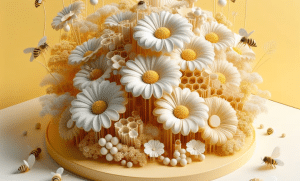
Trees and Shrubs Supporting Pollinators
Trees and shrubs play a crucial role in supporting pollinators such as bees, butterflies, and hummingbirds. These plants provide not only a reliable source of pollen and nectar but also offer shelter, nesting sites, and protection from predators. By incorporating trees and shrubs that are rich in pollen and nectar into our landscapes, we can create a thriving habitat for these important pollinators.
One type of tree known for its ability to attract and support pollinators is the fruit tree. Apples, pears, and cherries are all popular choices as they produce beautiful blossoms that are irresistible to bees. These trees provide a valuable source of pollen and nectar for bees, enabling them to thrive and contribute to the pollination of nearby crops.
Shrubs such as butterfly bush and elderberry are also known for their attractiveness to pollinators. Butterfly bush, with its vibrant blooms, acts as a magnet for butterflies, hummingbirds, and bees. Its long flowering period ensures a continuous supply of nectar throughout the summer. Elderberry, on the other hand, produces an abundance of small white flowers that are highly attractive to bees and butterflies. Additionally, elderberries provide a valuable food source for birds and other wildlife.
When selecting trees and shrubs for your pollinator-friendly landscape, it is important to choose native species whenever possible. Native plants have coevolved with local pollinators and are better suited to provide the necessary resources they need. Research local native species that are known to attract pollinators and incorporate them into your garden.
By planting trees and shrubs that support pollinators, you are not only creating a beautiful and diverse landscape but also playing a crucial role in maintaining and preserving our pollinator populations. So, let’s start transforming our outdoor spaces into havens for bees, butterflies, and other pollinators by adding these pollen and nectar-rich trees and shrubs to our gardens.
Types of Trees and Shrubs with Abundant Pollen and Nectar
Many types of trees and shrubs are known for their ability to attract and provide abundant pollen and nectar for pollinators. These plants are a valuable addition to any pollinator-friendly landscape, as they offer a reliable food source and habitat for bees, butterflies, and other pollinating insects.
One popular tree that attracts pollinators is the Eastern redbud (Cercis canadensis). This small, ornamental tree produces clusters of pink or purple flowers in early spring, which are rich in nectar. Bees, butterflies, and hummingbirds are particularly fond of the redbud’s sweet nectar and will flock to it when it is in bloom.
Another tree that pollinators love is the black cherry (Prunus serotina). The black cherry tree produces clusters of white flowers in the spring, which are a favorite of bees and butterflies. The flowers provide a rich source of nectar, and the tree’s fruits are also enjoyed by wildlife.
Shrubs such as the flowering currant (Ribes sanguineum) and the bottlebrush buckeye (Aesculus parviflora) are also popular choices for attracting pollinators. The flowering currant produces beautiful clusters of pink or red flowers in the spring, which are highly attractive to bees and hummingbirds. The bottlebrush buckeye, as its name suggests, produces long, brush-like white flowers that are rich in nectar. Bees and butterflies flock to these flowers to gather nectar and pollen.
When selecting trees and shrubs for a pollinator-friendly landscape, it is important to choose species that are native to your region. Native plants have coevolved with local pollinators and are well adapted to provide the resources they need. By incorporating trees and shrubs with abundant pollen and nectar into your garden, you can create an inviting and thriving habitat for pollinators.
Creating a Pollinator-Friendly Landscape with Trees and Shrubs
Creating a pollinator-friendly landscape involves not only choosing the right flowers but also incorporating trees and shrubs that provide abundant pollen and nectar. Trees and shrubs play a crucial role in attracting and sustaining pollinators by offering additional sources of food and shelter.
When selecting trees and shrubs for a pollinator-friendly garden, it is essential to choose species that are native to your region. Native plants have coevolved with local pollinators and are well adapted to provide the resources they need. They also provide a sense of place and contribute to the overall biodiversity of the ecosystem.
One popular tree known to attract pollinators is the Eastern redbud (Cercis canadensis). This small, ornamental tree produces clusters of pink or purple flowers in early spring, which are rich in nectar. Bees, butterflies, and hummingbirds are particularly fond of the redbud’s sweet nectar and will flock to it when it is in bloom.
Another tree that pollinators love is the black cherry (Prunus serotina). The black cherry tree produces clusters of white flowers in the spring, which are a favorite of bees and butterflies. The flowers provide a rich source of nectar, and the tree’s fruits are also enjoyed by wildlife.
Shrubs such as the flowering currant (Ribes sanguineum) and the bottlebrush buckeye (Aesculus parviflora) are also popular choices for attracting pollinators. The flowering currant produces beautiful clusters of pink or red flowers in the spring, which are highly attractive to bees and hummingbirds. The bottlebrush buckeye, as its name suggests, produces long, brush-like white flowers that are rich in nectar. Bees and butterflies flock to these flowers to gather nectar and pollen.
Incorporating trees and shrubs with abundant pollen and nectar into your garden can create an inviting and thriving habitat for pollinators. These plants not only provide a reliable food source but also offer shelter and nesting sites. By creating a pollinator-friendly landscape with a variety of trees, shrubs, and flowers, you can ensure the health and well-being of pollinators in your area.
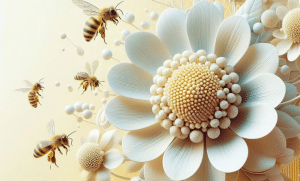
Herbs and Vegetables for Pollinators
Herbs and vegetables are not only tasty additions to our gardens and meals but can also provide a valuable source of pollen and nectar for pollinators. Including these plants in our gardens can attract a diverse range of pollinators, including bees, butterflies, and even hummingbirds.
When selecting herbs and vegetables to support pollinators, it is important to choose varieties that produce flowers rich in pollen and nectar. Some popular options include basil, thyme, and oregano. These herbs produce clusters of small flowers that are highly attractive to bees and butterflies. In addition to their culinary uses, their flowers provide a vital food source for pollinators.
Vegetables such as zucchini, cucumbers, and tomatoes also produce flowers that attract pollinators. These flowers are rich in nectar and are particularly attractive to bees. By planting these vegetables in your garden, you can provide a continuous supply of pollen and nectar for pollinators throughout the growing season.
Including herbs and vegetables in your garden not only benefits pollinators but also has other advantages. Many herbs, such as mint and dill, have natural pest-resistant properties and can help deter unwanted insects from your garden. Additionally, growing your own vegetables allows you to enjoy fresh, nutritious produce while reducing your carbon footprint.
To make your garden even more pollinator-friendly, consider letting some of your herbs and vegetables go to seed. This will provide additional food sources for pollinators and create a more sustainable garden ecosystem.
By including herbs and vegetables in your garden, you can create an inviting habitat for pollinators while also enjoying the benefits of fresh, homegrown produce. So why not add some herbs and vegetables to your garden and reap the rewards of a pollinator-friendly landscape?
Herbs and Vegetables that Provide Pollen and Nectar
Many herbs and vegetables not only add flavor to our meals but also provide an abundant supply of pollen and nectar for pollinators. Including these plants in our gardens not only benefits our taste buds but also supports the important work of bees, butterflies, and other pollinators.
Some popular herbs that provide pollen and nectar include basil, thyme, and oregano. These herbs produce clusters of small flowers that are highly attractive to bees and butterflies. Basil, in particular, is known for its strong scent and is a favorite of bees. Thyme and oregano also produce beautiful flowers that are rich in nectar.
In addition to herbs, certain vegetables also produce flowers that attract pollinators. Zucchini, cucumbers, and tomatoes are some examples of vegetable plants that provide both pollen and nectar. Their flowers are particularly attractive to bees, ensuring a continuous supply of food throughout the growing season.
By planting these herbs and vegetables in your garden, you can create an inviting habitat for pollinators while also enjoying the benefits of fresh, homegrown produce. These plants not only provide a vital source of food for pollinators but also offer natural pest-resistant properties. Herbs like mint and dill, for example, can help deter unwanted insects from your garden.
To further support pollinators, consider letting some of your herbs and vegetables go to seed. This will provide additional food sources for pollinators and create a more sustainable garden ecosystem.
Overall, including herbs and vegetables in your garden not only benefits you but also supports the health and abundance of pollinators. So why not add these plants to your garden and enjoy the rewards of a pollinator-friendly landscape?
Benefits of Growing Pollinator-Friendly Herbs and Vegetables
Growing pollinator-friendly herbs and vegetables in your garden not only benefits the pollinators themselves but also offers numerous advantages for you as a gardener. Here are some of the key benefits of cultivating these plants in your garden:
- Increased pollination: By providing a habitat rich in pollen and nectar, you will attract a diverse range of pollinators, such as bees, butterflies, and hummingbirds, to your garden. These pollinators play a crucial role in fertilizing flowers, leading to increased fruit and vegetable yields. With more pollinators visiting your garden, you can expect larger harvests and better crop quality.
- Biodiversity and ecological balance: Including a variety of pollinator-friendly herbs and vegetables in your garden helps promote biodiversity and ecological balance. Different species of plants attract different pollinators, ensuring a diverse and healthy ecosystem in your garden. This diversity can also help to deter pests and reduce the need for pesticides.
- Beautiful and fragrant garden: Many pollinator-friendly herbs and vegetables produce beautiful flowers that add color and visual interest to your garden. From the vibrant purple blossoms of basil to the delicate white flowers of thyme, these plants can enhance the aesthetic appeal of your garden while providing a vital food source for pollinators.
- Sustainability and self-sufficiency: Growing your own herbs and vegetables not only saves you money but also reduces your reliance on store-bought produce. By choosing pollinator-friendly varieties, you can support both your own food production and the health of pollinators. This sustainable approach contributes to a healthier environment and promotes self-sufficiency.
- Educational opportunities: Planting pollinator-friendly herbs and vegetables provides valuable learning opportunities for children and adults alike. Observing the interactions between pollinators and plants can foster an understanding and appreciation of the natural world. It also offers a chance to teach future generations about the importance of pollinators and their role in our food system.
In conclusion, growing pollinator-friendly herbs and vegetables in your garden offers a host of benefits, from increased pollination and higher yields to promoting biodiversity and providing educational opportunities. By creating a welcoming space for pollinators, you can enjoy a beautiful, sustainable, and productive garden.
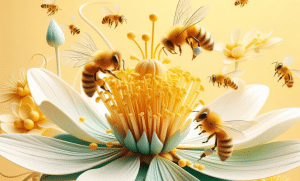
Native Plants and Pollinators
Native plants play a crucial role in supporting pollinators and maintaining a healthy ecosystem. These plants have evolved alongside native pollinators and have developed specific adaptations to attract and provide food for them. By incorporating native plants into our gardens and landscapes, we can create a welcoming environment for a variety of pollinators, including bees, butterflies, and birds.
One of the key advantages of using native plants is that they are well-suited to the local soil and climate conditions. They have deep root systems that help prevent erosion and improve water infiltration, which is beneficial for both plants and pollinators. Native plants also require less maintenance and are more resistant to pests and diseases, reducing the need for chemical treatments.
Furthermore, native plants offer a diverse range of nectar and pollen sources throughout the year. They bloom at different times, ensuring a continuous food source for pollinators from early spring to late fall. This is particularly critical during times when other food sources may be limited. By planting a variety of native plants, you can attract a wide array of pollinators and support their population.
Some native plants that are particularly attractive to pollinators include milkweed, coneflowers, goldenrods, asters, and native grasses. These plants provide abundant nectar and pollen, and their vibrant flowers are a beautiful addition to any garden. Additionally, native plants often have longer floral tubes, making them accessible to a wider range of pollinators, including butterflies with longer proboscis.
In conclusion, native plants are essential for supporting pollinators and creating a thriving ecosystem. By incorporating these plants into our gardens and landscapes, we can provide a reliable food source for pollinators, enhance biodiversity, and contribute to the overall health of our environment. So, consider planting native plants and experience the joy of watching pollinators thrive in your garden.
Importance of Native Plants in Supporting Pollinators
Native plants play a crucial role in supporting pollinators and maintaining a healthy ecosystem. These plants have evolved alongside native pollinators and have developed specific adaptations to attract and provide food for them. By incorporating native plants into our gardens and landscapes, we can create a welcoming environment for a variety of pollinators, including bees, butterflies, and birds.
One of the key advantages of using native plants is that they are well-suited to the local soil and climate conditions. They have deep root systems that help prevent erosion and improve water infiltration, which is beneficial for both plants and pollinators. Native plants also require less maintenance and are more resistant to pests and diseases, reducing the need for chemical treatments.
Furthermore, native plants offer a diverse range of nectar and pollen sources throughout the year. They bloom at different times, ensuring a continuous food source for pollinators from early spring to late fall. This is particularly critical during times when other food sources may be limited. By planting a variety of native plants, you can attract a wide array of pollinators and support their population.
Some native plants that are particularly attractive to pollinators include milkweed, coneflowers, goldenrods, asters, and native grasses. These plants provide abundant nectar and pollen, and their vibrant flowers are a beautiful addition to any garden. Additionally, native plants often have longer floral tubes, making them accessible to a wider range of pollinators, including butterflies with longer proboscis.
In conclusion, native plants are essential for supporting pollinators and creating a thriving ecosystem. By incorporating these plants into our gardens and landscapes, we can provide a reliable food source for pollinators, enhance biodiversity, and contribute to the overall health of our environment. So, consider planting native plants and experience the joy of watching pollinators thrive in your garden.
Native Plants that Attract a Variety of Pollinators
Native plants are not only beautiful, but they also play a vital role in attracting a variety of pollinators to your garden. These plants have coevolved with native pollinators over centuries, making them a perfect match for each other. By incorporating native plants into your garden, you can create a welcoming environment for bees, butterflies, hummingbirds, and other essential pollinators.
One example of a native plant that attracts a wide range of pollinators is milkweed. Milkweed is not only a host plant for monarch butterflies, but it also provides nectar for many other butterfly species, bees, and even hummingbirds. Its bright, showy flowers are irresistible to pollinators.
Another native plant that is highly attractive to pollinators is the coneflower. With its vibrant colors and long-lasting blooms, the coneflower is a favorite among bees and butterflies. It offers a generous supply of nectar, making it a valuable food source for pollinators throughout the summer.
Goldenrods are also a fantastic addition to any pollinator-friendly garden. Contrary to popular belief, goldenrods are not a major cause of allergies but are instead a major source of nectar for bees, butterflies, and other insects. Their bright yellow flowers provide a much-needed food source in late summer and fall when other nectar sources may be scarce.
Native grasses, such as switchgrass and little bluestem, are often overlooked as pollinator plants. However, these grasses provide nectar and shelter for a variety of pollinators, including bees and butterflies. Their subtle beauty adds texture and movement to the garden while attracting essential pollinators.
Incorporating a diversity of native plants in your garden will attract a greater variety of pollinators. By providing a continuous source of pollen and nectar throughout the season, these plants contribute to the overall health and survival of pollinators. So, consider planting native plants and create a haven for pollinators in your backyard.
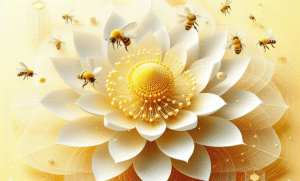
In conclusion, incorporating pollen and nectar rich plants into your garden is not only aesthetically pleasing but also a crucial step in supporting pollinators and promoting a healthy ecosystem. The benefits of pollen and nectar for pollinators are extensive, providing them with vital nutrition and contributing to the reproduction of many plant species. Furthermore, the presence of pollinators is essential for the natural balance and diversity of our environment.
By choosing flowers that are rich in pollen and nectar, you can attract a wide variety of pollinators to your garden. These flowers have unique characteristics such as bright colors, strong fragrances, and specific shapes that are designed to appeal to different pollinators. Additionally, trees and shrubs can provide abundant pollen and nectar sources, creating a more extensive habitat for pollinators.
Growing herbs and vegetables that provide pollen and nectar not only benefits pollinators but also brings additional benefits to your kitchen. Many herbs and vegetables can be enjoyed in your meals while supporting the health and well-being of pollinators.
Lastly, native plants are of utmost importance in supporting pollinators as they have co-evolved with native pollinators over centuries. Incorporating a diverse range of native plants in your garden will attract a greater variety of pollinators and provide a continuous source of pollen and nectar throughout the season.
In conclusion, by planting Pollen and nectar rich plants, you are not only creating a beautiful and vibrant garden but also playing a crucial role in the conservation of pollinators and the overall health of our ecosystem. So, let your garden bloom with these essential plants and embrace the beauty and benefits that pollinators bring.
Tips for Planting Pollen and Nectar Rich Plants
When it comes to planting Pollen and nectar rich plants, there are a few tips to keep in mind to ensure success and attract a wide range of pollinators to your garden.
- Choose a variety of plants: To provide a continuous and diverse source of pollen and nectar, opt for a mix of flowers with different bloom times and plant heights. This will accommodate the various feeding preferences of different pollinators throughout the season.
- Plant in clusters: Instead of scattering individual plants throughout your garden, create clusters of the same species. This will help attract pollinators more effectively as they can easily spot and access the concentrated sources of pollen and nectar.
- Provide a water source: Pollinators also need water to thrive, so include a shallow bird bath or small water feature in your garden. Be sure to keep it filled with clean water to provide a refreshing drink for visiting pollinators.
- Avoid pesticides: Pesticides can be harmful to pollinators, so it’s important to avoid using them in your garden. Instead, opt for natural pest control methods, such as companion planting and regular inspection for signs of pests.
- Consider native plants: Native plants are well-suited to the local climate and have evolved alongside native pollinators. Including a variety of native plants in your garden will attract a greater diversity of pollinators and provide a familiar and reliable source of pollen and nectar.
- Maintain a pesticide-free buffer zone: If possible, create a pesticide-free buffer zone around your garden to protect pollinators from neighboring areas that may be treated with pesticides.
By following these tips, you can create a welcoming and abundant habitat for pollinators and contribute to the conservation of these essential species. Remember, even small changes in your garden can make a big difference for pollinators and the overall health of the ecosystem.
Frequently Asked Questions
Here are some frequently asked questions about Pollen and nectar rich plants and their importance in attracting pollinators:
What are Pollen and nectar rich plants?
Pollen and nectar rich plants are flowers, trees, shrubs, herbs, and vegetables that produce ample amounts of pollen and nectar. These plants serve as essential food sources for pollinators such as bees, butterflies, hummingbirds, and other insects.
Why are pollen and nectar important for pollinators?
A: Pollen is a source of protein for bees and other insects, while nectar provides carbohydrates and energy. Pollinators rely on these nutrients to survive and reproduce. By planting Pollen and nectar rich plants, you can help support the health and diversity of pollinator populations.
How do Pollen and nectar rich plants benefit the ecosystem?
Pollen and nectar rich plants play a crucial role in ecosystem health. They promote plant reproduction by aiding in pollination, which leads to the production of seeds and fruits. Additionally, they support biodiversity by attracting and sustaining a variety of pollinators that are essential for the pollination of many plant species.
Can I attract pollinators with only a few Pollen and nectar rich plants?
While any effort to plant pollinator-friendly species is beneficial, creating a diverse and abundant habitat will attract a greater variety of pollinators. By planting a mix of flowers, trees, shrubs, herbs, and vegetables that bloom at different times throughout the year, you can provide a continuous food source for pollinators.
What can I do to conserve pollinators in my garden?
In addition to planting Pollen and nectar rich plants, you can enhance your garden’s appeal to pollinators by providing water sources such as birdbaths and minimizing pesticide use. It is also beneficial to include native plants in your garden, as they have evolved alongside native pollinators and provide a familiar and reliable source of food.
By implementing these strategies and incorporating Pollen and nectar rich plants into your garden, you can make a significant difference in supporting pollinator populations and benefiting the overall ecosystem.
I hope this information on the best nectar plants for pollinators has been helpful in creating a thriving garden that supports these crucial insects. Remember, by planting these Pollen and nectar rich plants, you are not only creating a beautiful space for yourself but also helping to support the important work of pollinators. Let me know in the comments if you have any favorite nectar plants for pollinators that you would like to add to the list! Thank you for reading.



